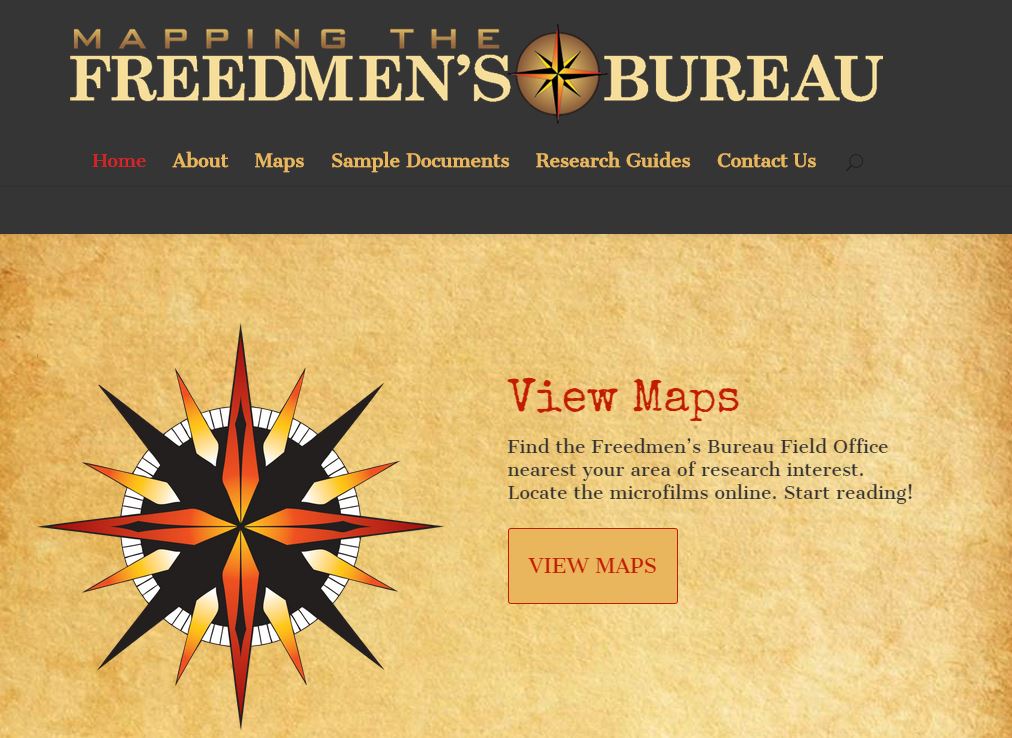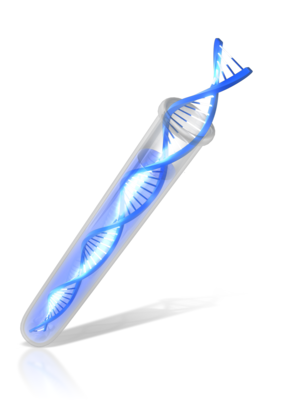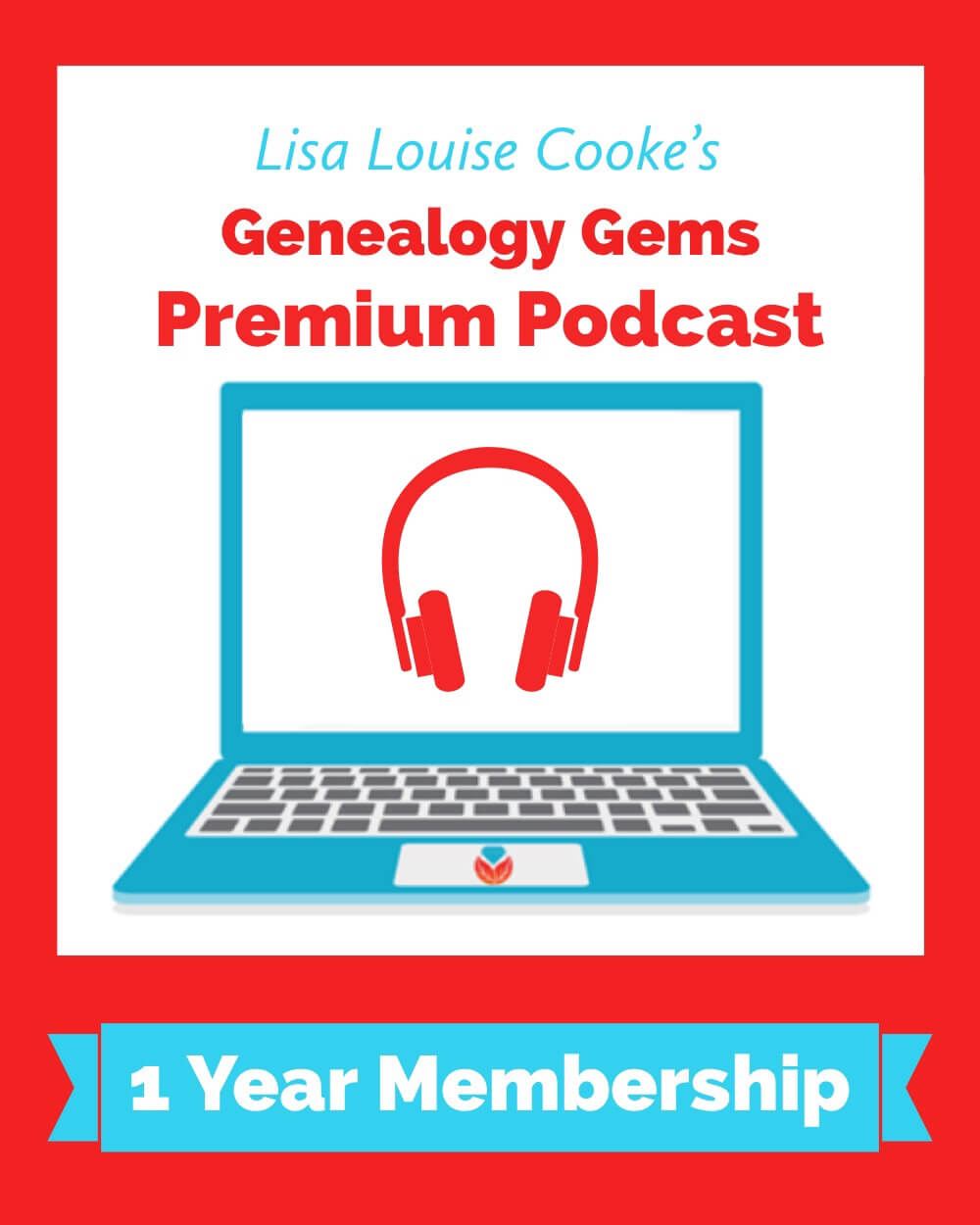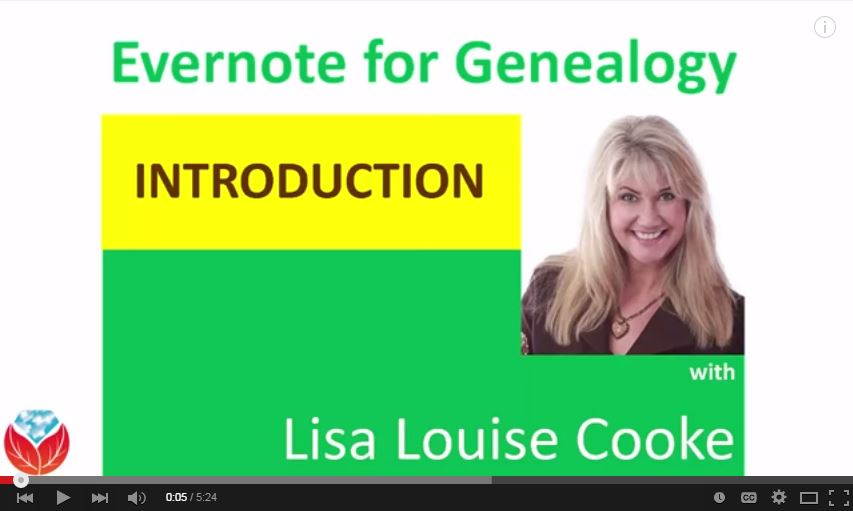by Lisa Cooke | Jan 6, 2015 | 01 What's New, African-American, History, Maps, Records & databases
The time period after the U.S. Civil War is a messy era for searching for African-American ancestors from the South. Millions of people were emerging
 from slavery, without documented histories of who they were or who they were related to–many without even consistent first and last names.
from slavery, without documented histories of who they were or who they were related to–many without even consistent first and last names.
A NEW website helps researchers locate important African-American genealogy resources from the post-war Reconstruction era. Mapping the Freedmen’s Bureau is a map-based tool for helping you find the Freedmen’s Bureau offices and hospitals, Freedman’s Bank offices, “Contraband Camps,” U.S. Colored Troops battle sites and other locations nearest your ancestors that may have created records about them. Many of these record sets are just coming online or are newly indexed and are free to search, so the timing couldn’t be better.
What a fantastic tool! I’m so pleased to see this site. Now those who know what location they’re starting with can easily glance at a map and click to see which of these resources exist in a specific locale and where to find them online or offline.
Listen to my interview with African-American genealogy research expert Deborah Abbott, PhD, in the FREE Genealogy Gems Podcast episode 159.
by Lisa Cooke | Oct 5, 2014 | 01 What's New, Australian, DNA
 Recently a group of 100 residents from Wellington, New Zealand assembled together to determine what exactly it was they had in common. Their host? Dr. Spencer Wells, Director of the National Genographic project. Their admittance fee to this party? A cheek swab.
Recently a group of 100 residents from Wellington, New Zealand assembled together to determine what exactly it was they had in common. Their host? Dr. Spencer Wells, Director of the National Genographic project. Their admittance fee to this party? A cheek swab.
What they learned about themselves that evening, has a direct impact on YOU, a genealogist interested in identifying your ancestors.
You see, 800 years ago the first inhabitants of New Zealand were just beginning to explore their new territory. They had arrived from the eastern islands of Polynesia and lived in relative isolation for over 500 years.
While first discovered by the Dutch in 1642, New Zealand wasn’t regularly visited by Europeans until the late 18th century. For Spencer Wells and the National Genographic Project, sampling people of New Zealand would provide a rare opportunity to study the genetic effect of a recent collision of indigenous and outside population groups.
We can think of mixing populations like adding a tablespoon of salt to a glass of water. At first it is easy to see the two different substances co-existing in the same location. But soon the salt becomes part of the water- creating a new substance, with only a small portion of the original substances remaining. This is what happened throughout history as outside groups arrived and intermarried with indigenous populations.
The goal of population genetics as a field of study, and specifically of the National Genographic project, is to look at the modern day population (in our example the salt water), and be able to identify which ancestral populations are present (in our example, determine which parts are salt, and which parts are water. This of course, without knowing beforehand that you were dealing with salt water!).
The National Geneographic project has identified 9 ancestral regions from which they believe all modern populations descend. These nine would be like our salt, and our water. They have then described how 43 reference population groups (our salt water) are comprised of their own unique mix of these 9 groups. They can also describe the origins of your direct maternal line, and if you are male, your direct paternal line.
This information was gathered for the Wellington residents. It was determined that the original Polynesian population and a small East Asian population are certainly the minority among a predominately Western European population group. This information will help groups like the National Genographic Project to determine the possible migration patterns of other peoples and cultures.
What does this mean for genealogy? This kind of research helps fuel the admixture results (the pie charts and percentages) reported to you by a genetic genealogy testing company when you take an autosomal DNA test. It is this research that helps genetic genealogists look at your DNA and pick out the essential, ancestral elements–your salt and your water–and determine how your unique mix reveals information about the origins and migration patterns of your ancestors.
Check out an article on this topic here.
by Lisa Cooke | Jul 25, 2013 | 01 What's New, iPad, Technology, Who Do You Think You Are?
 Would you like to be privy to the genealogical research strategies of the producers of the TV series Who Do You Think You Are? Genealogy Gems Premium Members get an exclusive cut from my recent interview with Allie Orton, Producer of the series that has moved to the TLC channel. Allie and her team work under a tight timetable and budget, and she provides tips to help you do the same.
Would you like to be privy to the genealogical research strategies of the producers of the TV series Who Do You Think You Are? Genealogy Gems Premium Members get an exclusive cut from my recent interview with Allie Orton, Producer of the series that has moved to the TLC channel. Allie and her team work under a tight timetable and budget, and she provides tips to help you do the same.
Also in this episode I’ve got not one but two new cool tricks to pump up your iPad / iPhone for genealogy! And we’ll also tackle a question about digital file organization that will help you get more organized.
All of these gems are part of a very special Premium episode: #100! And as a Premium Member you have access to all 100 in the podcast catalogue!

Not a Genealogy Gems Premium Member? Why not? Become a Member today and get immediate access to all of the genealogy goodness in both audio and video!
P.S. The remainder of the interview is coming to the next episode of the Genealogy Gems Podcast in early August. Stay tuned!
by Lisa Cooke | Apr 7, 2015 | 01 What's New, Evernote, Organization, Source Citation, Video, YouTube
Using Evernote for genealogy yet? I hear from people all over the world who are harnessing this free software to finally organize their family history  research FOR GOOD!
research FOR GOOD!
Evernote users can easily import online research finds–along with the URL and other important source information. Many people are bringing their family history papers (original documents and paper-based research) into Evernote, too. All their research materials together, keyword and OCR-searchable, in one space, accessible from and fully-synched across all your devices. Sigh! It’s wonderful!
There’s so much demand in the genealogy community for learning to use Evernote for genealogy that I’ve started a YouTube series: Evernote for Genealogy. Two videos are posted so far:
These videos are absolutely free to watch, and they’ll get anyone started using Evernote for genealogy. And of course all the Evernote applications are free too! Who do you know who would benefit from getting organized? I hope you’ll share these videos with your friends and relatives! How about the students in your life? Or your co-workers? We may be using genealogy, but note-taking and organization are important to everyone.
 Ready to take your Evernote learning a little further? Become a Genealogy Gems Premium member. Members have a full-year’s access to the ultimate Evernote education: my in-depth video series! Full-length classes for Premium members include:
Ready to take your Evernote learning a little further? Become a Genealogy Gems Premium member. Members have a full-year’s access to the ultimate Evernote education: my in-depth video series! Full-length classes for Premium members include:
Premium members also get access to my “Get Started with Evernote” mini video series:
Episode 1 – Signing Up for Your Free Evernote Account & Downloading the Desktop App
Episode 2 – Getting the Web Clipper
Episode 3 – How to Clip Using Evernote’s Desktop Clipper
Episode 4 – How to Clip Content Using Evernote’s Browser Web Clipper
Episode 5 – How to Use Evernote’s Web Clipper for Chrome
Click here to find even more resources for using Evernote for genealogy! And thanks for sharing this post with others who would benefit from using Evernote to organize their genealogy research.
by Lisa Cooke | May 6, 2015 | 01 What's New, images, Maps, Premium Video, Research Skills, YouTube
 Looking for a pre-1700 map of the Americas as the Europeans found it? Yearning to survey the plot of land your ancestors tilled in Cobb County, Georgia? Historic maps can point you in the direction of your ancestors. But navigating your way to an original map can be a costly and time-consuming trek. Before you venture down that road, navigate your way to the treasury of digitized maps available online!
Looking for a pre-1700 map of the Americas as the Europeans found it? Yearning to survey the plot of land your ancestors tilled in Cobb County, Georgia? Historic maps can point you in the direction of your ancestors. But navigating your way to an original map can be a costly and time-consuming trek. Before you venture down that road, navigate your way to the treasury of digitized maps available online!
A new video class can help Genealogy Gems Premium members do just that: Best Websites for Finding Historical Maps. Literally hundreds of thousands of historical maps are available for free online in high-resolution digital format that you can download right to your computer without ever leaving home. The websites I show you offer some of the largest map collections available on the Internet today. I demonstrate strategies for searching the best websites for historical maps that will help YOUR research. You’ll see what’s out there, how to find the right maps and how to download and use them.
 Genealogy Gems Premium members also have access to my popular online video class, 5 Ways to Enhance Your Genealogy Research with Old Maps. Not a Premium member? Get a taste of these classes for free on the Genealogy Gems YouTube channel! Check out this free excerpt: “Using Sanborn Fire Maps for Family History and Genealogy.”
Genealogy Gems Premium members also have access to my popular online video class, 5 Ways to Enhance Your Genealogy Research with Old Maps. Not a Premium member? Get a taste of these classes for free on the Genealogy Gems YouTube channel! Check out this free excerpt: “Using Sanborn Fire Maps for Family History and Genealogy.”
 from slavery, without documented histories of who they were or who they were related to–many without even consistent first and last names.
from slavery, without documented histories of who they were or who they were related to–many without even consistent first and last names.



 research FOR GOOD!
research FOR GOOD!

